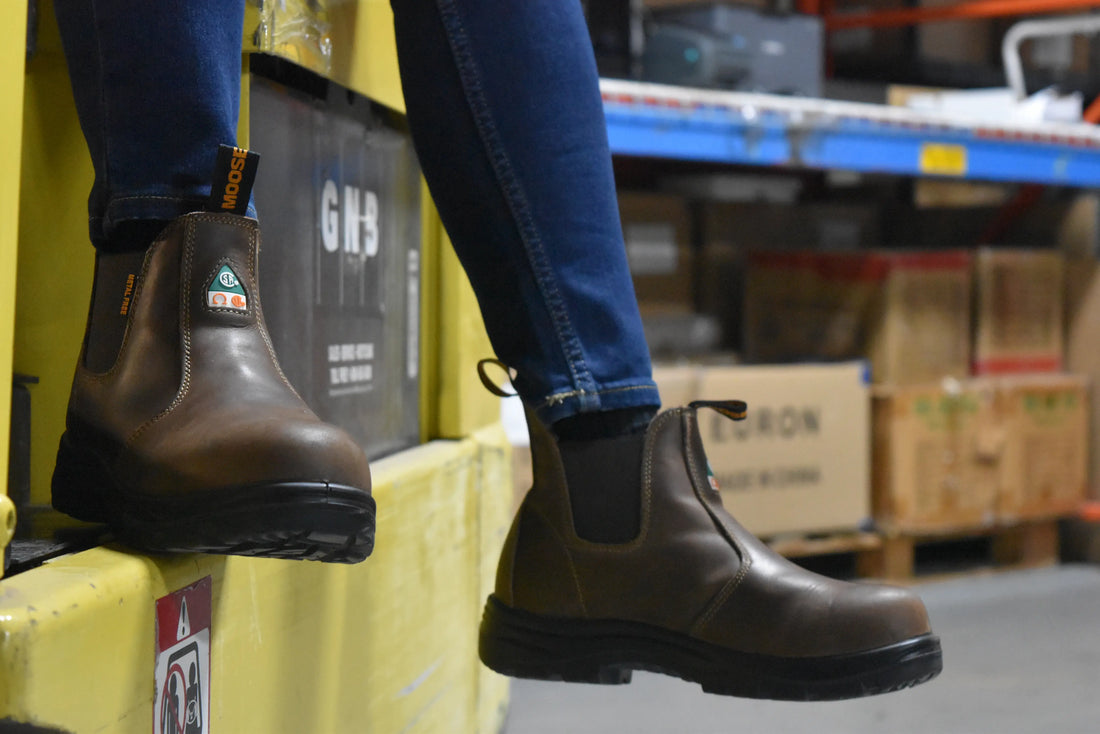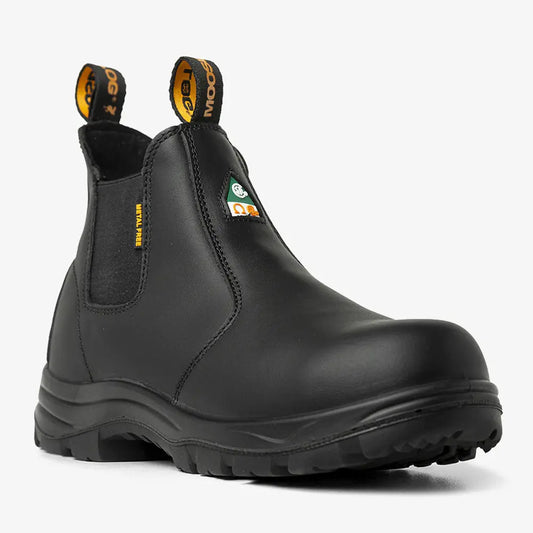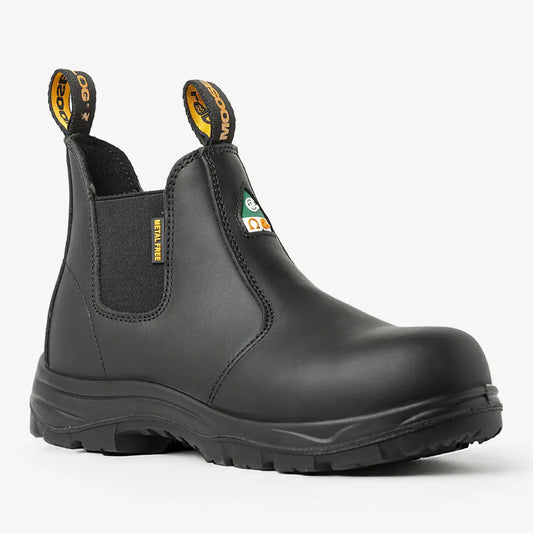
What Does CSA Stand For in Boots?
What CSA Means in Boots
CSA stands for Canadian Standards Association. It is an independent organization that writes and maintains national safety standards.
When a boot is labelled CSA approved, it means the footwear has been tested and certified to meet the CSA Z195 standard for protective footwear. The testing covers toe impact resistance, puncture protection, and electrical safety.
CSA certification is required on most industrial jobsites in Canada. Employers and inspectors use the CSA mark to confirm that a product meets the country’s legal safety requirements.
What a CSA Rating Means
The CSA rating tells you what kind of protection the boot provides. Each approved boot has a small symbol or label that identifies its level of protection.
| CSA Symbol | Colour | Meaning |
|---|---|---|
| Green triangle | Green | Grade 1 toe cap and puncture-resistant plate. Required for construction, warehousing, and heavy industry. |
| Yellow triangle | Yellow | Grade 2 toe cap with puncture-resistant plate for light-duty work. |
| White rectangle with Ω | White | Electrical shock resistant (ESR). Protects against electric current. |
| Yellow rectangle with “SD” | Yellow | Static dissipative footwear used in electronic or flammable environments. |
| Red rectangle with “C” | Red | Conductive footwear used when static electricity must be avoided. |
Each label must be permanent and easy to read. If the symbol or text is missing, the footwear is not verified by CSA.
How to Tell If a Boot Is CSA Approved

- Look for the CSA symbol patch or label on the boot tongue, heel, or inside lining.
- Check for the CSA Z195 code printed near the logo.
- Confirm the manufacturer’s name is listed beside the mark.
If a product says it “meets CSA standards” but has no official CSA mark, it is not certified. Genuine CSA approval always includes the logo and code.
Key Features of a CSA Approved Boot
- Reinforced toe made of steel, composite, alloy, or nano material.
- Puncture-resistant midsole plate.
- Slip-resistant rubber outsole.
- Electrical or static protection rating.
- Permanent CSA identification label.
Most certified work boots also include shock-absorbing midsoles and durable uppers made for industrial conditions.
Do CSA Boots Expire

CSA certification itself does not expire. However, the protective materials inside the boot can wear down over time. Replace your boots if you notice:
- Worn or smooth outsoles.
- A cracked or dented toe cap.
- A soft or flexible puncture plate.
- Labels that are no longer readable.
Most workers replace their safety boots every 12 to 24 months depending on use.
Do You Need CSA Boots to Work in Canada

Yes, if you work in construction, manufacturing, logistics, utilities, or any other regulated trade. Provincial safety laws require approved protective footwear in these environments.
For office or retail work, CSA footwear is optional, but many people still choose it for durability and traction during Canadian winters.
Conclusion
CSA certification protects Canadian workers by setting clear safety standards for footwear. Understanding the markings helps you choose boots that fit both your job and legal requirements. Always check for the CSA logo before buying, and inspect your boots regularly to make sure they still meet the standard.
If you’re looking for certified work boots that meets CSA Z195 standards, explore the full MooseLog Safety Boot Collection today.






